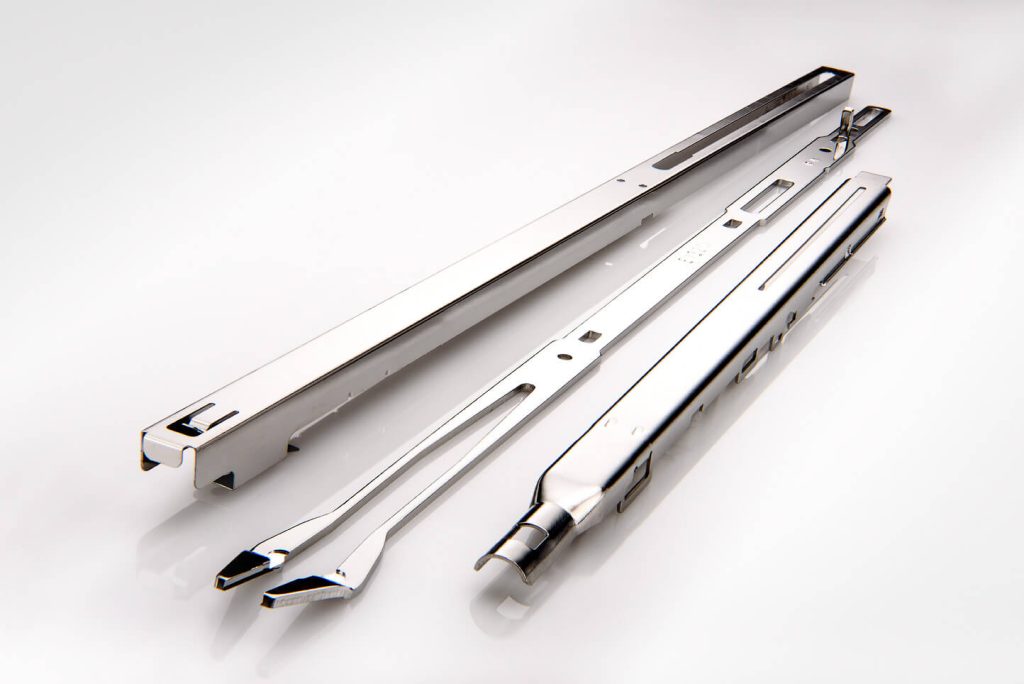How to Verify the Effectiveness of Stainless Steel Passivation
Stainless steel passivation is a crucial process that enhances corrosion resistance and durability. By removing free iron and contaminants, passivation restores the chromium oxide layer that naturally protects stainless steel from oxidation and corrosion. However, verifying the success of this process is essential to ensure the material meets performance standards, especially in critical applications like medical devices, aerospace components, or food-grade equipment.
This guide explores methods to confirm the effectiveness of stainless steel passivation, ranging from traditional tests to advanced analytical techniques.

Why Verify Passivation Effectiveness?
Verification ensures that stainless steel passivation has been properly performed, resulting in a uniform, protective chromium oxide layer. Inadequate passivation can lead to premature corrosion, reducing the lifespan and reliability of stainless steel components. Testing provides confidence in the treatment and helps identify areas that may require additional processing. Wondering how much material does electropolishing remove?
Common Methods to Verify Passivation
1. Water Immersion Test
The water immersion test evaluates corrosion resistance by exposing stainless steel to water for an extended period.
How It Works:
- Immerse the passivated stainless steel part in deionized or distilled water for 24 to 48 hours.
- Inspect the surface for signs of rust or discoloration, which would indicate incomplete passivation.
Advantages:
- Simple and inexpensive.
- Non-destructive.
Limitations:
- Relies on visual inspection, which can be subjective.
- May not detect microscopic defects.
2. Copper Sulfate Test
This is a common method to detect free iron on the surface, ensuring the effectiveness of stainless steel passivation.
How It Works:
- Apply a copper sulfate solution to the stainless steel surface.
- After a set period (typically 6 minutes), rinse and examine the surface.
- The presence of copper-colored deposits indicates free iron and insufficient passivation.
Advantages:
- Quick and effective for detecting surface contaminants.
- Straightforward to perform.
Limitations:
- Destructive to the tested area, requiring re-passivation afterward.
- Limited to identifying free iron rather than overall chromium oxide layer integrity.
3. High-Humidity Test
This test evaluates the passivated surface’s resistance to corrosion in humid conditions.
How It Works:
- Place the stainless steel part in a high-humidity chamber (e.g., 95% humidity at 25°C) for 24 to 48 hours.
- Inspect for any rust or corrosion.
Advantages:
- Mimics real-world environmental exposure.
- Non-destructive.
Limitations:
- Requires specialized equipment.
- Time-consuming.
Advanced Analytical Techniques
1. X-Ray Photoelectron Spectroscopy (XPS)
XPS provides a detailed analysis of the stainless steel surface’s elemental composition.
How It Works:
- Expose the sample to X-rays and analyze emitted electrons to identify elements and confirm the presence of chromium oxide.
Advantages:
- Highly accurate and precise.
- Determines the thickness and uniformity of the passive layer.
Limitations:
- Expensive and time-intensive.
- Requires specialized laboratory equipment.
2. Auger Electron Spectroscopy (AES)
AES focuses on analyzing the thin surface layer of stainless steel, detecting contaminants and measuring the passive layer’s integrity.
How It Works:
- The surface is bombarded with electrons, and the emitted Auger electrons are analyzed for elemental identification.
Advantages:
- High-resolution surface analysis.
- Effective for detecting microscopic defects.
Limitations:
- Costly and requires skilled operators.
3. Electrochemical Testing
Electrochemical methods assess corrosion resistance by applying a small voltage to the stainless steel sample.
How It Works:
- Submerge the sample in an electrolyte solution and apply a controlled voltage.
- Measure the resulting current to determine corrosion resistance.
Advantages:
- Provides quantitative data on passivation effectiveness.
- Suitable for comparing treated and untreated samples.
Limitations:
- Requires advanced equipment and expertise.
Factors to Consider When Testing Passivation
- Application Requirements:
- For critical uses, advanced methods like XPS may be essential.
- Simpler tests, such as the copper sulfate test, may suffice for general industrial applications.
- Part Geometry:
- Intricate or internal surfaces may require non-destructive testing.
- Budget and Resources:
- While advanced tests provide greater accuracy, they also involve higher costs.
Conclusion
Verifying the effectiveness of stainless steel passivation is essential to ensure optimal corrosion resistance and longevity. Methods such as the water immersion test, copper sulfate test, and advanced techniques like XPS and electrochemical testing offer a range of solutions for different applications.
Selecting the right verification method ensures your stainless steel components meet quality standards, resist corrosion, and perform reliably in demanding environments. By confirming the success of your passivation process, you safeguard the integrity of your products and extend their service life.
For more information about stainless steel passivation, visit New England Electropolishing’s website to learn how our expertise can enhance the performance of your stainless steel components.
Electropolishing Resources

What is Electropolishing?
Electropolishing is an electrochemical and reverse plating process that removes the outer layer of skin on a metal...

The Electropolishing Process
The electropolishing process is initiated by immersing a metal part into a temperature-controlled bath of electrolyte...

Benefits of Electropolishing
Curious about the benefits of putting your parts through the electropolishing process? Read along below where we...

How Much Material Does Electropolishing Remove?
Electropolishing, when done properly is a highly controllable process which removes as little as...

How Much Will Electropolishing Improve the Surface Finish of My Part?
Ra and RMS are both representations of surface roughness. Ra is calculated as the roughness average of a surface’s...

Electropolishing Frequently Asked Questions
Learn the difference between electropolishing and electroplating as well as how the electropolishing process works...

What is ASTM B912?
ASTM B912 is an industry standard for the passivation of stainless steel alloys through electropolishing...

What is ASTM A967?
ASTM A967 is an industry standard specification for the chemical passivation treatments for stainless...

What is ISO 13485?
ISO 13485 is a standard that applies specifically to medical devices. ISO 13485 is designed to be...
